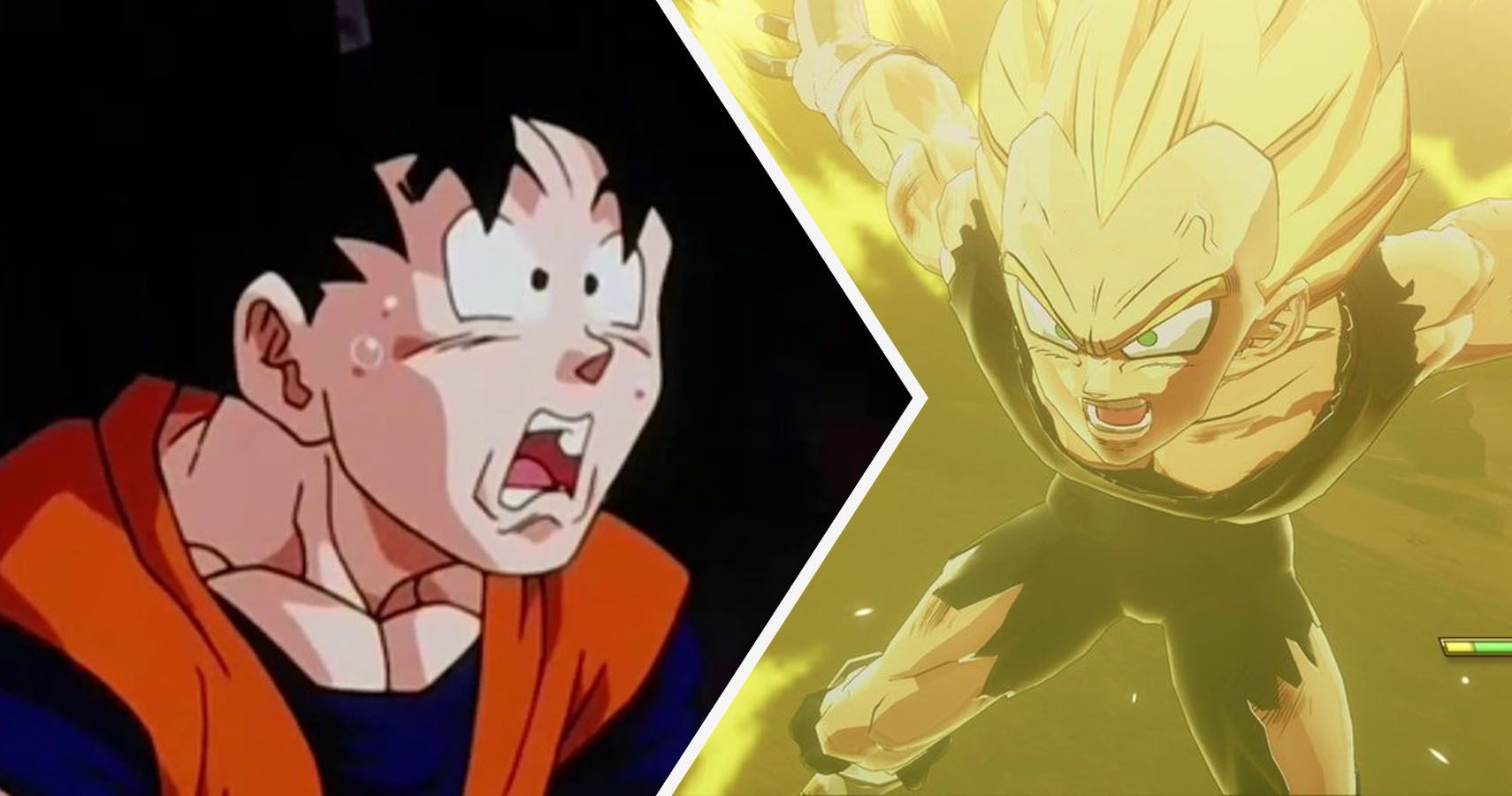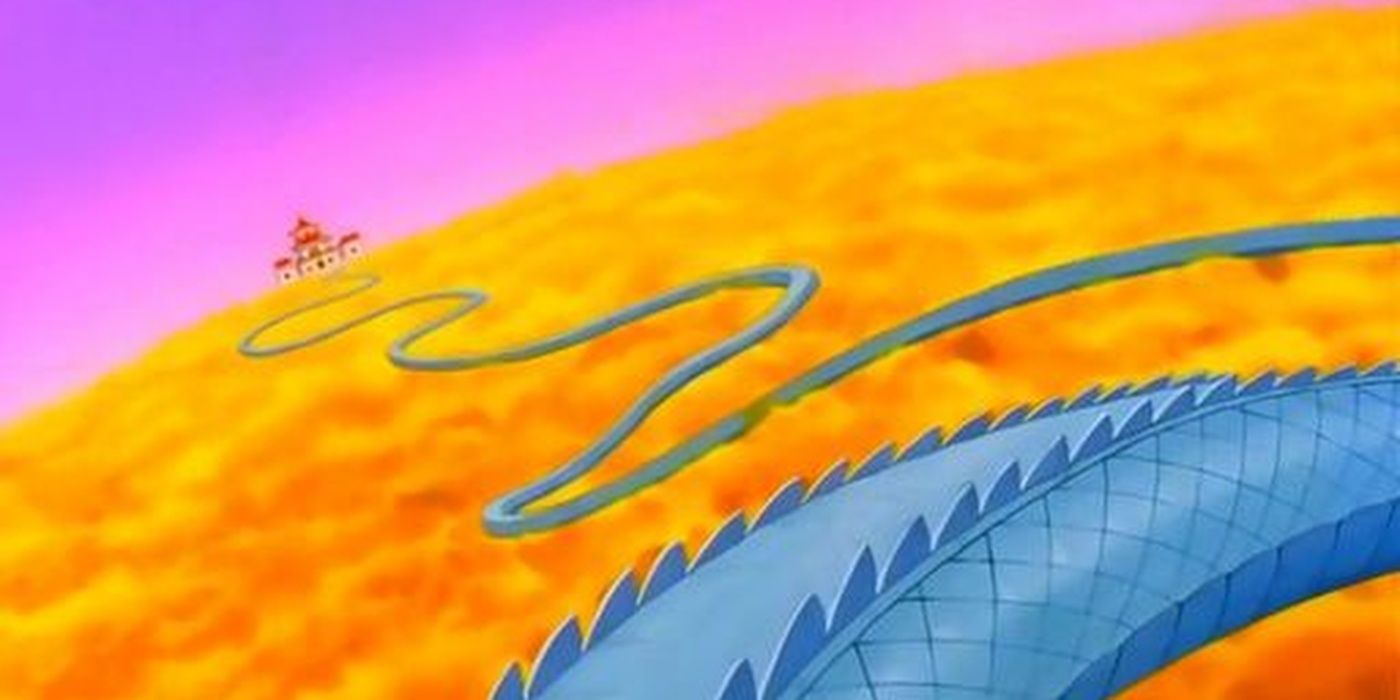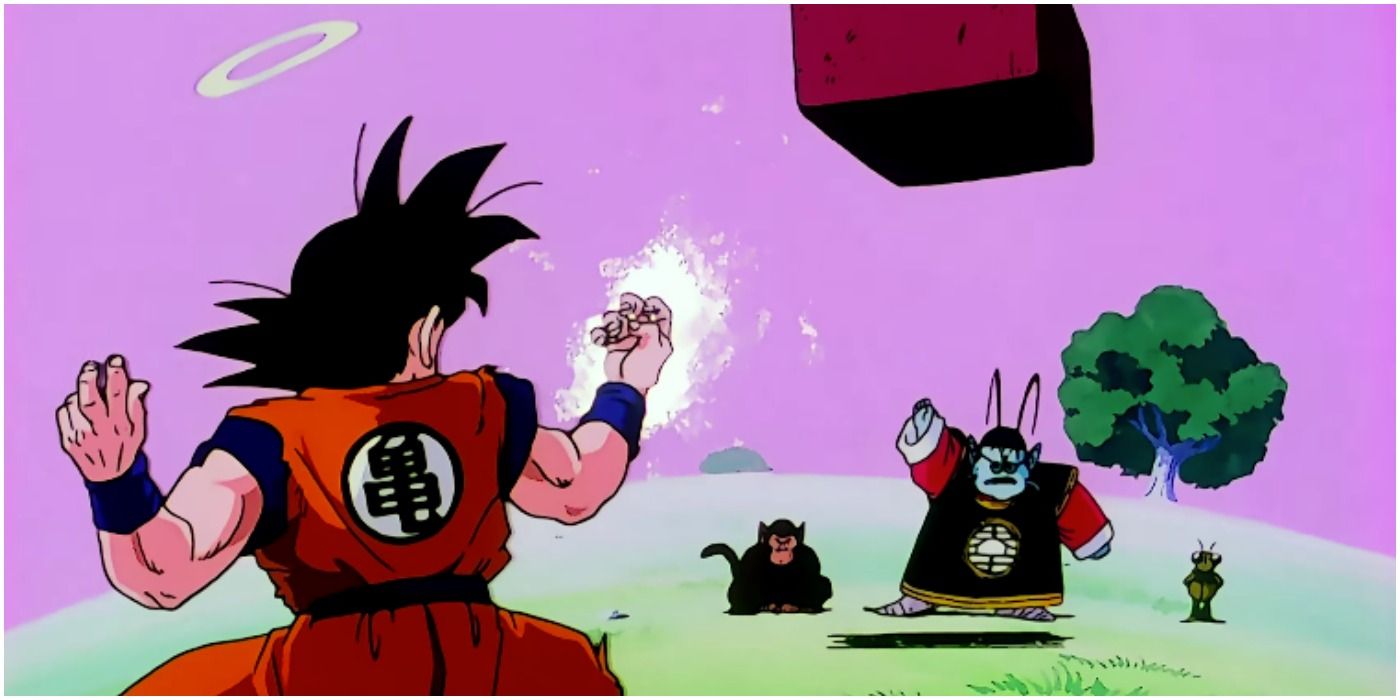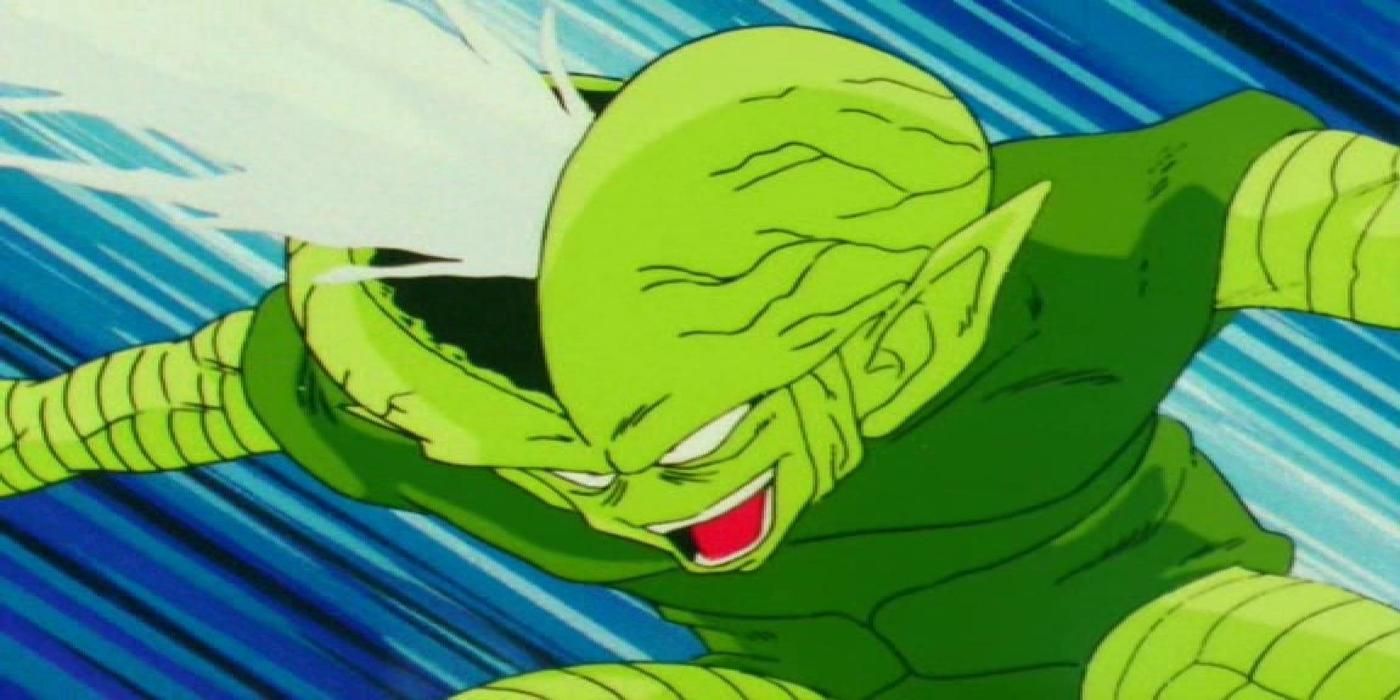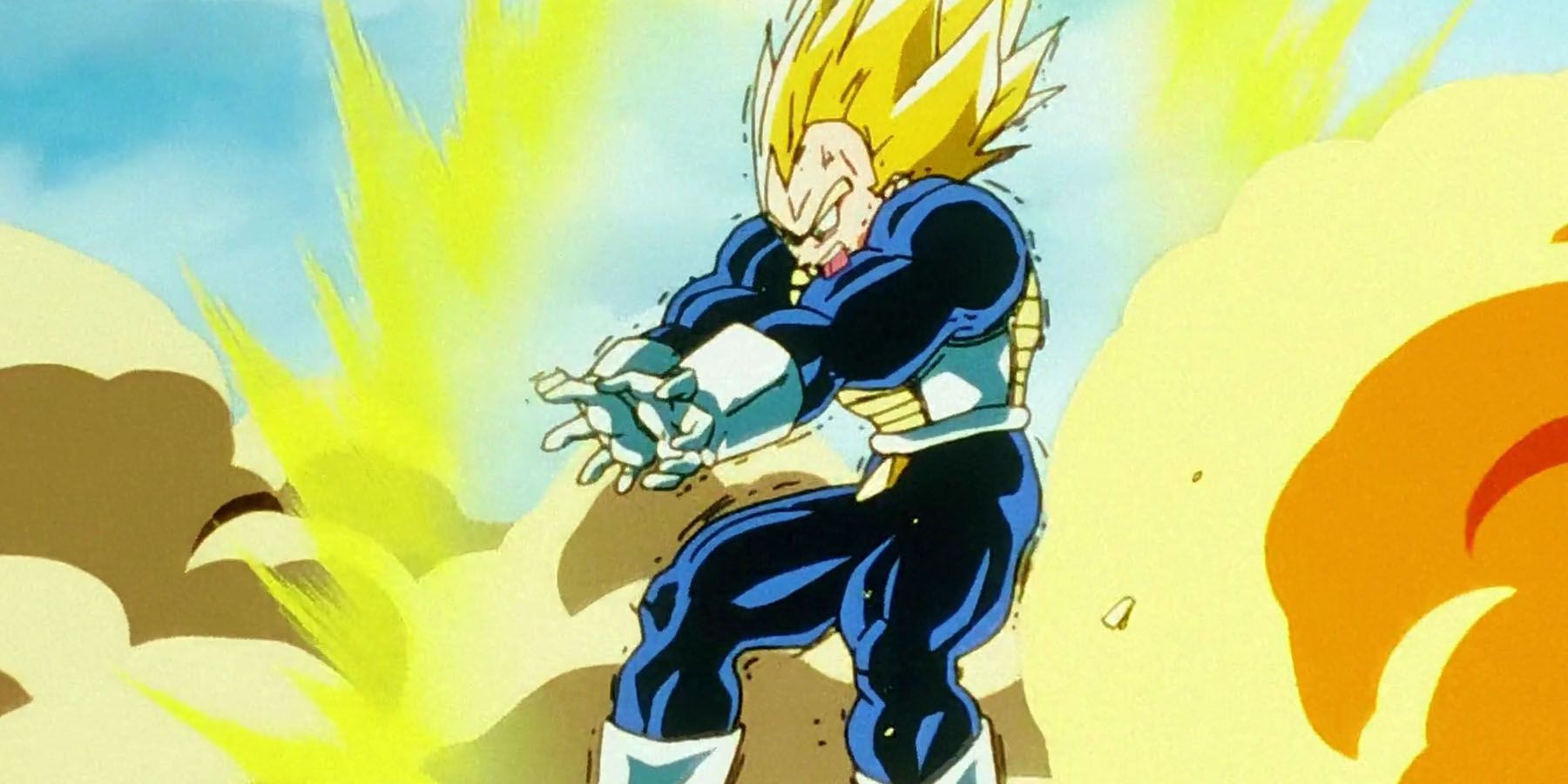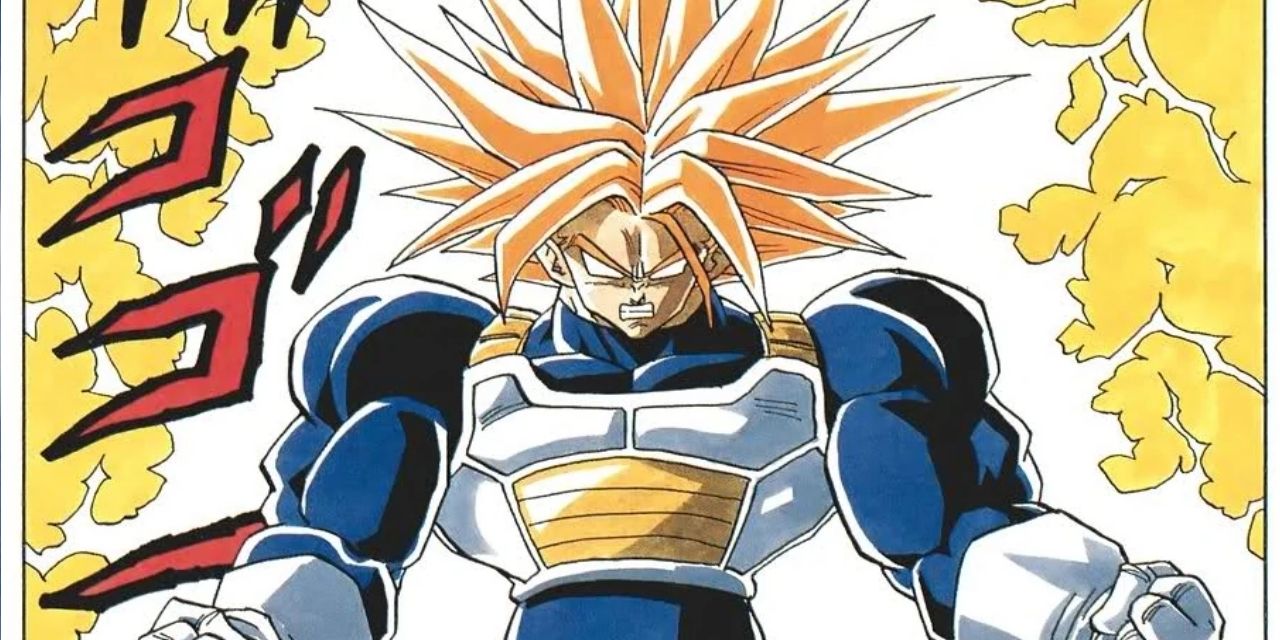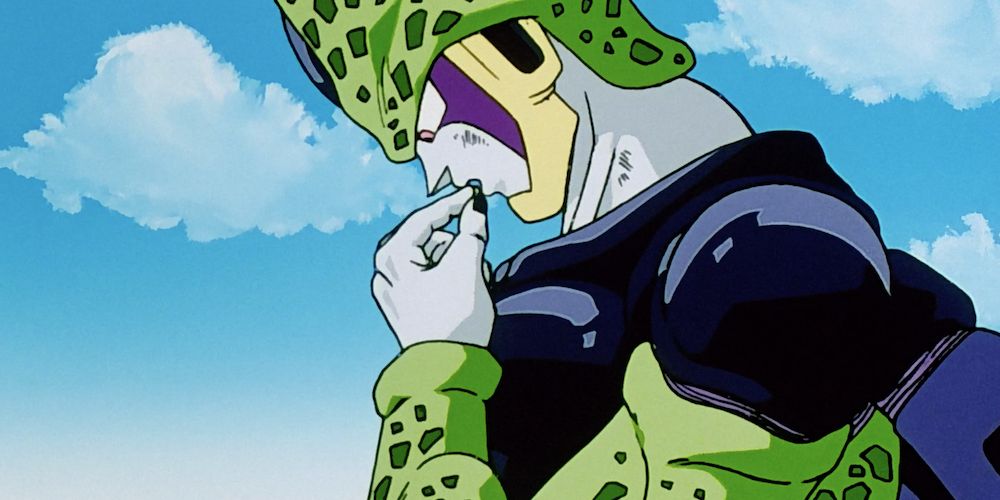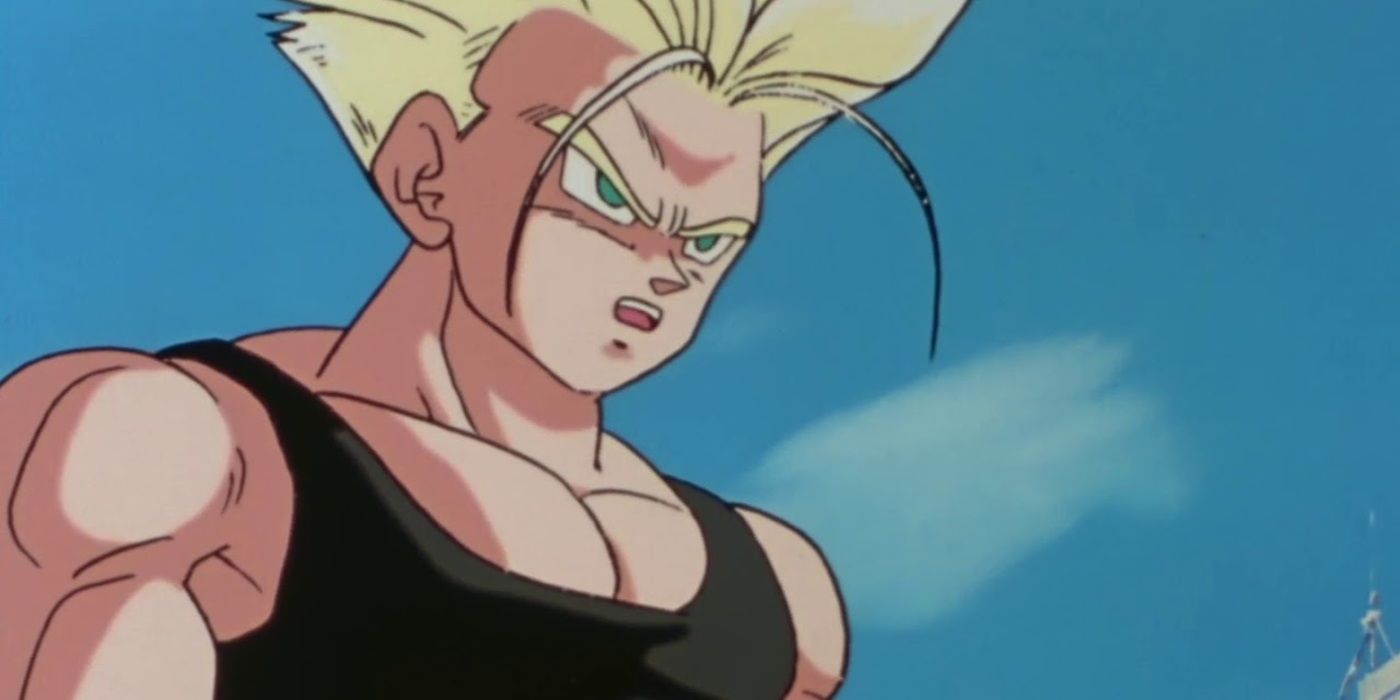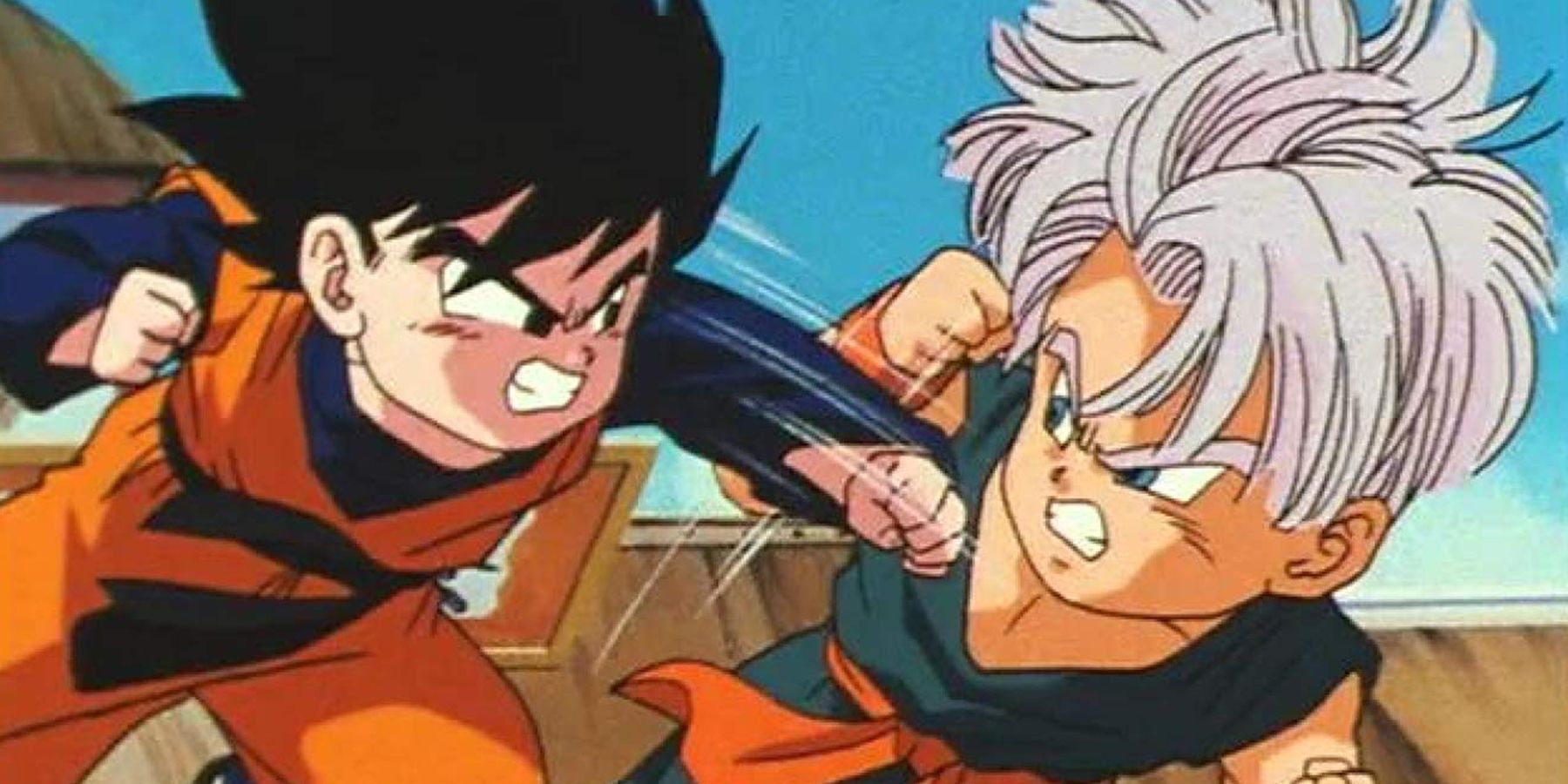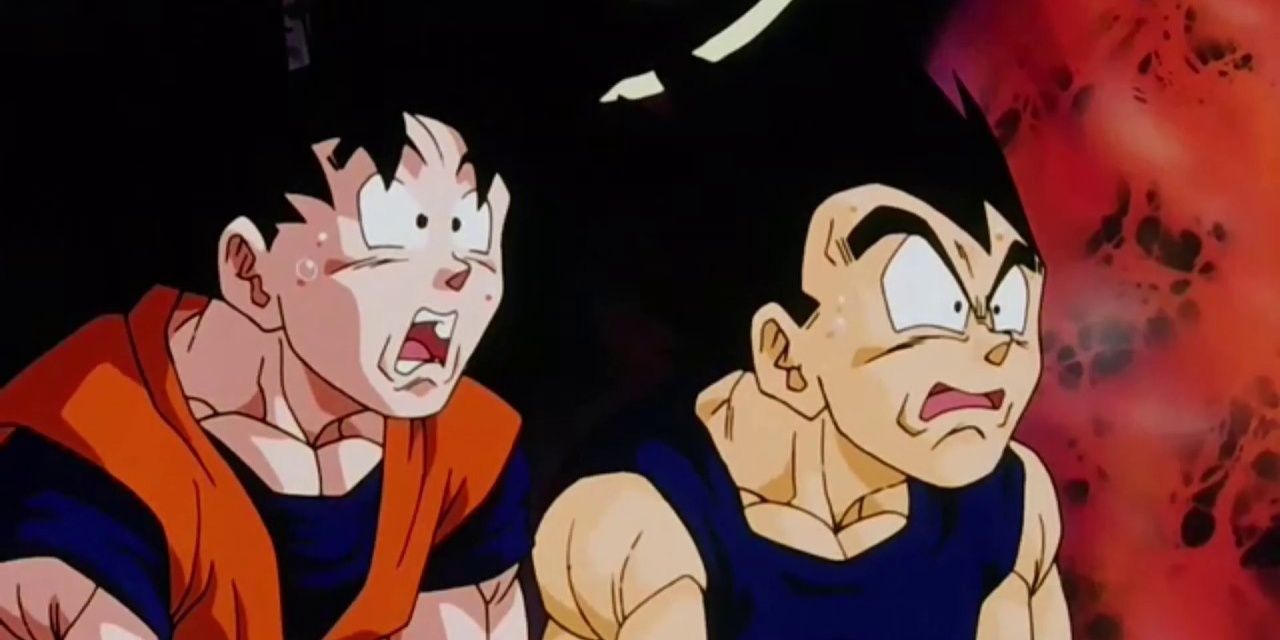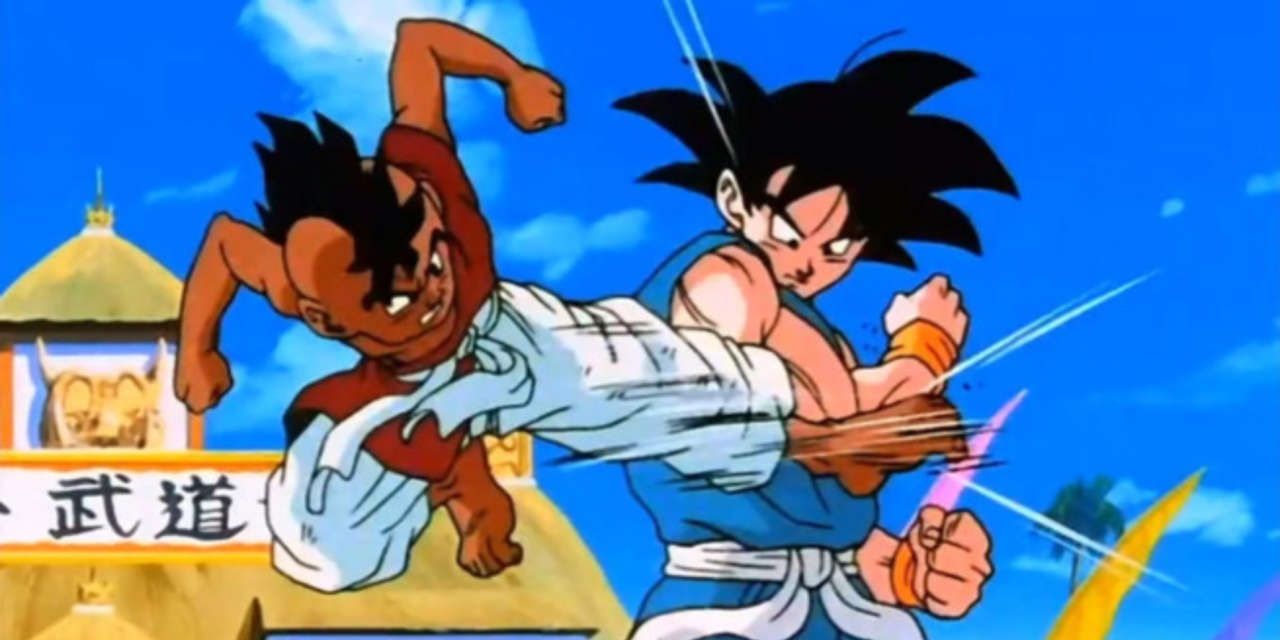Although the franchise predominantly dabbles in fighting games these days, Dragon Ball’s early video games career was most commonly defined by JRPGs. Across the 8-bit and 16-bit eras, the Famicom (NES) and Super Famicom (SNES) saw a great number of Dragon Ball adaptations, a majority focusing on retelling the series’ narrative while mixing in turn-based combat.
Dragon Ball would shift gears as the fighting genre refined itself, but the franchise’s many RPGs mark an important age in its storied history. Dragon Ball Z: Kakarot was not only a return to the RPGs that defined the early series, but a full adaptation of DBZ in earnest. Unfortunately, Dragon Ball Z: Kakarot’s ambition is a double-edged sword and the mere task of adapting 4 story arcs proves too much for the RPG– resulting in too many cuts.
10 Goku’s Journey To Kaio (Saiyan Arc)
There was quite a bit of apprehension early on surrounding the idea that Dragon Ball Z: Kakarot would exclusively tell the story through Goku’s eyes, but even Goku ended up losing quite a lot of story material. In both the manga & the anime, Goku spends a considerable amount of time traversing Serpentine Road.
While the manga features no real narrative meat for Goku here, Toriyama uses Goku’s journey to Kaio as a means of conveying the passage of time while framing Gohan’s early training with Piccolo. As is, Kakarot leaves Goku in the background once he’s dead and focuses exclusively on Gohan.
9 Goku Training With Kaio (Saiyan Arc)
Which really wouldn’t be such a bad thing if players at least got to spend time training with Kaio once Goku reached his planet. The time Goku spends with Kaio is crucial not just for his growth as a martial artist, but as a character. It’s here where he affirms his identity as a Saiyan for the first time and begins to truly parallel Gohan & Piccolo’s arcs.
Toriyama also cuts away from Goku’s training prematurely, as a means to save Kaioken as a narrative surprise, but Kakarot skips over just about everything involving Kaio. As a result, Kaioken loses quite a bit of its impact while Goku misses out on some fairly important characterization.
8 Earthlings Fighting The Saibaimen (Saiyan Arc)
One of the biggest mistakes the Earthlings make heading into the Saiyan invasion is their assumption that they can simply handle things as they normally would. Everyone fighting the Saibaimen one-on-one is a decent strategy to buy time, but the situation isn’t so simple and it isn’t long before Yamcha’s death kicks off a tragic chain reaction.
While Kakarot does adapt every Earthling’s death, the fact so little time is spent characterizing them (a consequence of arbitrarily adapting a story starting with its 7th arc) results in their deaths ringing hollow. Not helping matters is that their exhibition against the Saibaimen is all but skipped over in favor of a fight Gohan never participated in to begin with.
7 Vegeta’s Final Flash (Cell Arc)
Early trailers for Dragon Ball Z: Kakarot made fans worry that the game would only cover the Saiyan and Frieza arcs, but all things considered, the Cell arc is proof the RPG never should have left Namek. The moment the Frieza arc comes to an end, Kakarot abandons all notions of humoring the audience and just stops adapting the full story.
One of the story’s most disappointing moments occurred when it came time for Vegeta to use the Final Flash against Cell… only he didn’t. While Vegeta can technically use the technique in-battle against Cell, one of the arc’s most iconic scenes was left unadapted.
6 Trunks Fighting Cell (Cell Arc)
Worse than Vegeta missing out on his Final Flash, is the disservice immediately done to Future Trunks as a character. In general, Kakarot does not handle Trunks well, muddying his introduction against Frieza and outright denying him his last few fights (more on that later,) but the fact he gets no pay off to training in the Room of Spirit and Time is rough.
This whole section of the Cell arc is framed around the main cast’s pursuit to evolve the Super Saiyan transformation, with Vegeta, Trunks, and Goku all going down very different routes. Trunks’ fight against Cell showcases that power isn’t everything, and results in Trunks having the hope beat out of it. It’s a tense turning point that’s skipped over.
5 Goku Giving Cell A Senzu Bean (Cell Arc)
Goku giving Cell a Senzu Bean during the Cell Games is arguably the character’s most controversial moment, but it’s an important exchange that calms Cell enough to want to humor Gohan– instead of just immediately killing the boy so he can go back to fighting Goku. In Kakarot, this moment is skipped over in favor of Gohan simply stepping in.
This tracks with Kakarot’s depiction of Goku as a traditional “good” father, but Goku misunderstanding Gohan enough to throw Cell a Senzu Bean is also a plot point. Gohan does like martial arts, but not to the scale his father does and not to the same extremes. At the same time, it’s clear Goku can see something in Gohan no one else can. It’s a complex father-son dynamic that’s dumbed down in Kakarot.
4 The Resolution To Trunks’ Arc (Cell Arc)
Surprisingly this isn’t Kakarot’s most insulting omission, but it does come extremely close. If there’s one character the Cell arc is framed around, it’s Future Trunks. His introduction formally kicks off the story arc, and both the anime & manga take care to feature Trunks’ epilogue in full, allowing the audience to see Trunks save his timeline.
Kakarot chooses to keep momentum on Gohan, allowing Trunks to return to his future without so much as a boss fight. This would have been a golden opportunity to show off the map in the Trunks’ timeline while bookending the arc with a dual boss fight against 17 & 18 and then a final confrontation with Imperfect Cell. Trunks may as well have not been playable.
3 Most Of The 25th Tenkaichi Budokai (Buu Arc)
Dragon Ball Z: Kakarot devolves into nothing short of a narrative mess by the time the Buu arc starts. The story already doesn’t spend a lot of time with Gohan as Great Saiyaman, but Kakarot is content to skip over quite a bit of the arc’s early goings– likely in an attempt to reintroduce Goku ASAP. In turn, the Buu arc loses its gradual tonal buildup and a key part of its identity.
Gohan’s blossoming relationship with Videl is rushed, Goten & Trunks get next to no screen time and the 25th Tenkaichi Budokai captures none of the intrigue that led into Majin Buu’s revival. The tournament is basically included as a footnote, a detail too important for even Kakarot to cut– but does it try.
2 Goku & Vegeta Inside Buu (Buu Arc)
All things considered, this isn’t much of a loss as Kakarot likely would have dipped into the anime’s lousy filler content, but the time Goku and Vegeta spend inside of Buu is incredibly important. Not only does Vegetto defuse, Goku and Vegeta find a means to save everyone Buu absorbed (along with defusing the Djinn in the process.)
Considering Vegeta stumbles upon Fat Buu here, there’s some important foreshadowing that Kakarot glosses over. Goku and Vegeta do still enter Buu, but it’s rushed via text boxes. Perhaps the worst part, though? Candy Vegetto is skipped as well. It’s like Kakarot hates fun.
1 The Actual Ending (Buu Arc)
Dragon Ball Z: Kakarot was marketed as an adaption of the original manga’s last four story arcs, but the game was very clearly developed with Dragon Ball Super in mind. As a result, Kakarot never finishes adapting the full story, jarringly cutting to credits after the Genki Dama vaporizes Majin Buu. The story never comes to its thematic close and Goku’s arc is never wrapped up.
Dragon Ball’s original ending isn’t all that beloved, but it’s the best ending the story could have asked for– a complete understanding of who Goku is as a character and the tenets that defined Dragon Ball over the course of a decade. Kakarot simply doesn’t tell the whole story.

